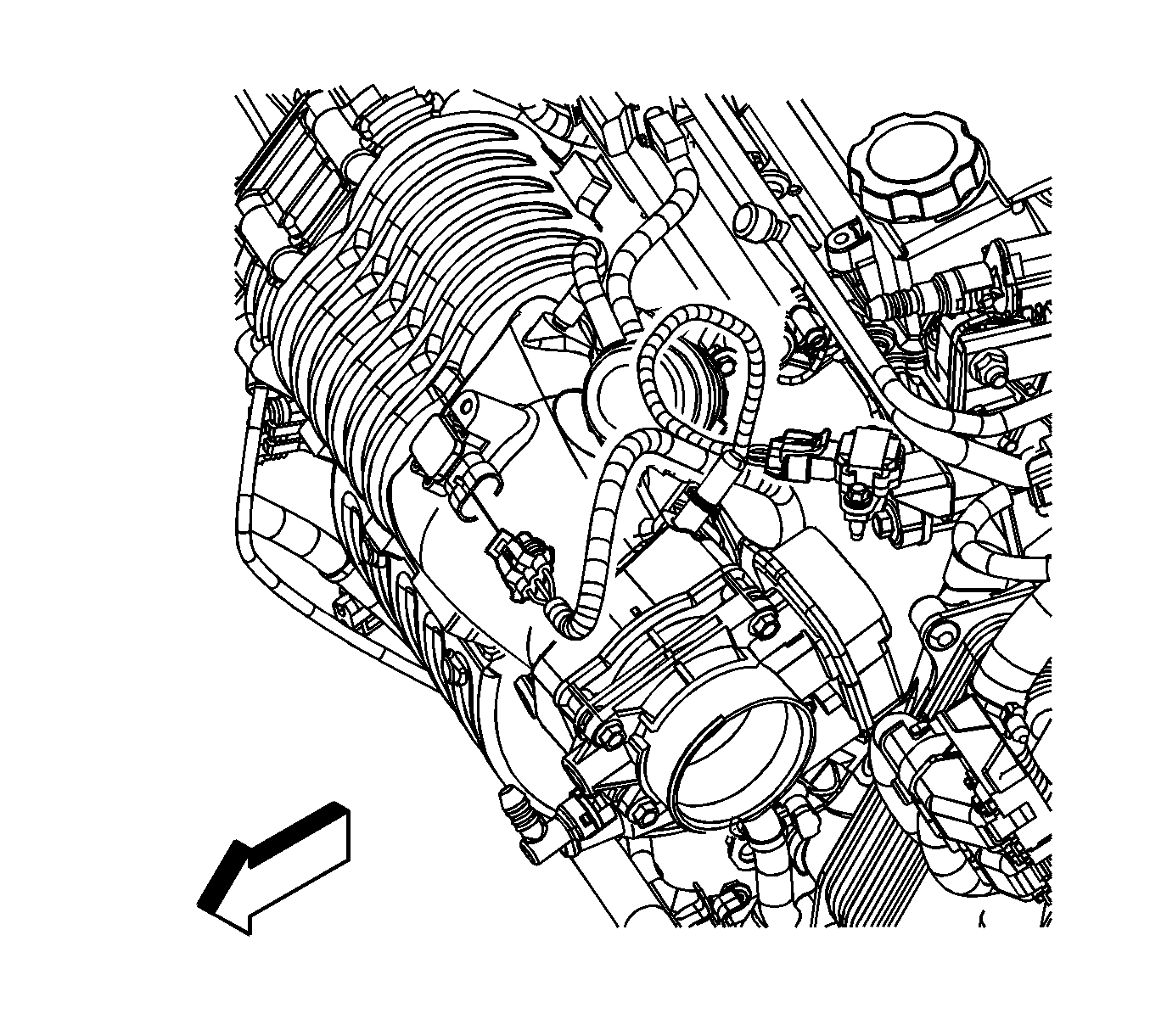Tools Required
J 34730-1A Fuel Pressure Gage
- Turn the ignition OFF.
- Disconnect the battery negative cable in order to avoid possible fuel discharge if an accidental attempt is made to start the engine. Refer to Battery Negative Cable Disconnection and Connection in Engine Electrical.
- Loosen the fuel filler cap to relieve the fuel tank vapor pressure.
- Remove the cap from the fuel pressure service port.
- Remove the engine identification cover nuts and cover.
- Connect the J 34730-1A to the fuel pressure service port connection. Wrap a shop towel around the port while connecting the gage in order to avoid spillage. Refer to Fuel Pressure Gage Installation and Removal .
- Install the bleed hose of the J 34730-1A into an approved fuel container.
- Open the bleed valve on the J 34730-1A in order to bleed the fuel system pressure. The fuel connections are now safe for servicing.
- Place a shop towel under the fuel pressure service port to catch any remaining fuel spillage.
- Disconnect the J 34730-1A from the fuel pressure service port connection. Refer to Fuel Pressure Gage Installation and Removal .
- Drain any fuel remaining in the gage into an approved fuel container.
- Install the cap to the fuel pressure service port.
Caution: Refer to Gasoline/Gasoline Vapors Caution in the Preface section.
Caution: Remove the fuel tank cap and relieve the fuel system pressure before servicing the fuel system in order to reduce the risk of personal injury. After you relieve the fuel system pressure, a small amount of fuel may be released when servicing the fuel lines, the fuel injection pump, or the connections. In order to reduce the risk of personal injury, cover the fuel system components with a shop towel before disconnection. This will catch any fuel that may leak out. Place the towel in an approved container when the disconnection is complete.

Caution: Do not drain the fuel into an open container. Never store the fuel in an open container due to the possibility of a fire or an explosion.
